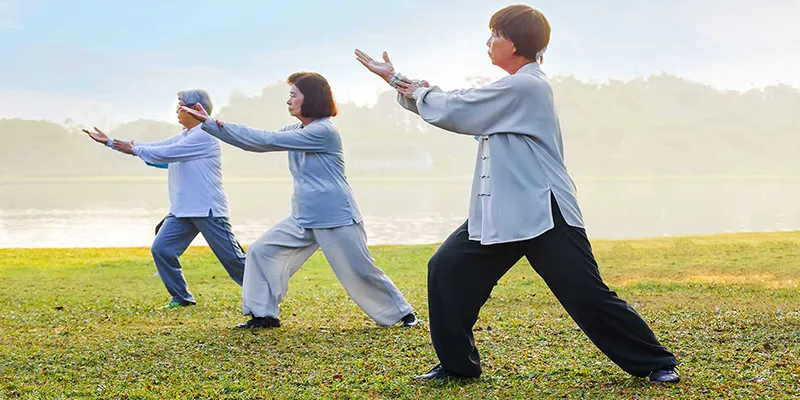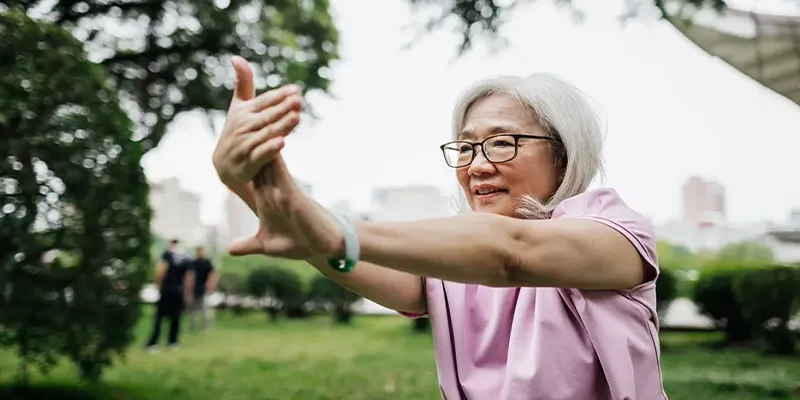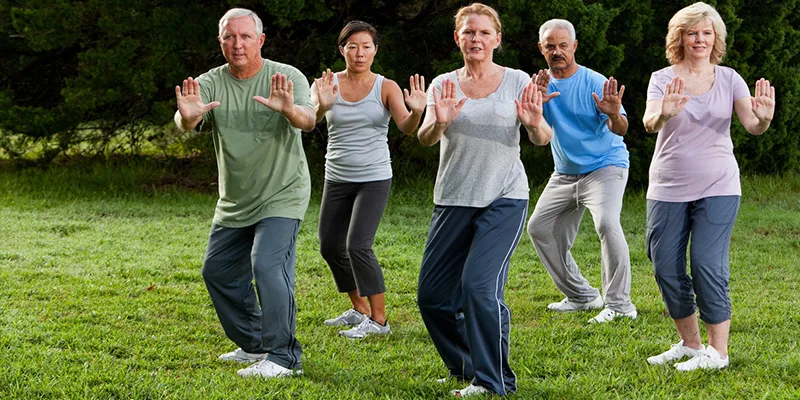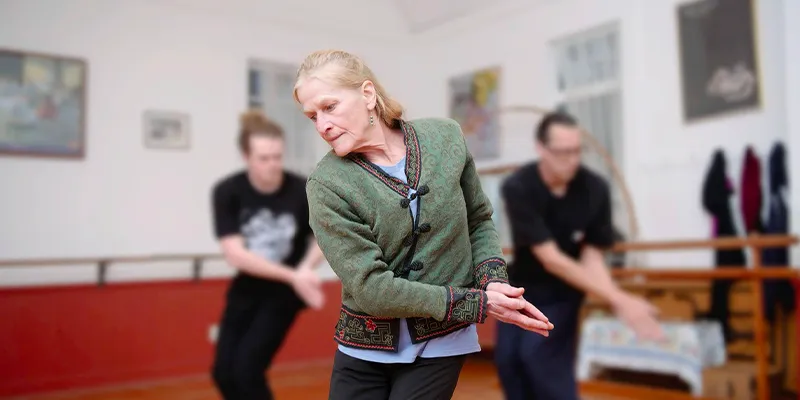The results of a clinical efficacy comparison trial published in the Annals of Internal Medicine in the United States showed that Tai Chi can improve the pain of arthritis patients just like physical therapy.

Arthritis is one of the most common chronic diseases in the elderly and a leading cause of disability. Arthritis patients experience pain, swelling, and stiffness. Tai Chi, also known as Tai Chi Quan, is a slow, gentle, and whole-body exercise that has received international attention in recent years as a method of exercise rehabilitation for chronic diseases. This article mainly shows how Tai Chi for arthritis works.
How Does Tai Chi for Arthritis Work?
Arthritis, characterized by joint pain, stiffness, and reduced mobility, affects millions globally. Finding safe, effective ways to manage symptoms and improve quality of life is crucial. Increasingly, Tai Chi for Arthritis, a specifically adapted program, is gaining recognition from healthcare professionals and major organizations like the CDC and the Arthritis Foundation as a valuable tool. But how exactly does this ancient practice work to alleviate arthritis?
Tai Chi is a centuries-old Chinese martial art involving slow, deliberate movements, deep breathing, and mental focus. Tai Chi for Arthritis is not a single, rigid form. It’s a program specifically modified to be safe and beneficial for people with arthritis. The most widely recognized is the Tai Chi for Arthritis program developed by Dr. Paul Lam in collaboration with medical specialists and tai chi masters. The key movements:
- Gentler Movements: Reduced motion and simplified steps compared to traditional styles.
- Safer: Movements are comfortable, minimizing stress on joints. Weight shifting is controlled and stable.
- Focus on Joint Health: Movements specifically target improving flexibility, strength, and stability in joints.
- Easy to Learn: Often taught seated or with chair support options.
Tai Chi for Arthritis Benefits

Improving Your Joint Function
First, the slow, continuous movements of Tai Chi lubricate joints and relieve stiffness without causing sharp impacts. Tai Chi exercises allow joints to become more flexible. Maintaining a stable posture and shifting body gravity strengthens leg muscles and strength. Stronger muscles provide better support and stability, which can reduce arthritis pain. Finally, practicing Tai Chi for arthritis requires constant attention to body position and gravity control, which reduces the risk of falling, a major concern for many arthritis patients.
Reducing Pain and Inflammation
Meditation and relaxation in Tai Chi can regulate pain in the nervous system; deep breathing and meditation can relieve stress and reduce cortisol levels, thereby reducing arthritis inflammation and pain. Tai Chi exercises and deep breathing increase blood flow throughout the body, delivering more oxygen and nutrients to the body and helping to clear inflammation.
Physical And Mental Health
Practicing Tai Chi for Arthritis requires breathing, movement and body connection. This practice can distract from pain and relieve anxiety and depression. Tai Chi practitioners pay more attention to their bodies and adjust their physical and mental health. Moreover, Tai Chi exercises are group exercises, just like authentic Tai Chi schools and Tai Chi centers for the elderly. We can improve our mood and quality of life through group Tai Chi practice.
Tai Chi for Arthritis Research
Tai Chi for arthritis getting more scientific research support:

Numerous studies, particularly on knee OA, show tai chi reduces pain and improves physical function like walking and stair climbing, enhances balance, and decreases stiffness. Research from institutions like Tufts Medical Center and Brigham and Women’s Hospital supports these findings.
Studies indicate tai chi can help reduce pain and fatigue, improve mood and overall well-being, and potentially lower markers of inflammation in individuals with RA. While the impact on disease activity may be less pronounced than in OA, functional improvements are significant.
Tai chi has proved effective in reducing widespread pain, fatigue, sleep disturbances, and depression in fibromyalgia patients, often outperforming conventional aerobic exercise in some studies.
Tai chi, including Tai Chi for Arthritis programs, is one of the most effective exercises for improving balance and reducing fall risk in older adults and those with conditions affecting stability.
Tips to Learn Tai Chi for Arthritis
- Consult Your Doctor: Always discuss starting any new exercise program with your physician, especially if you have severe joint damage, osteoporosis, or other health conditions.
- Find a Qualified Instructor: Look for instructors specifically certified to teach Tai Chi for Arthritis programs like the one developed by Dr. Paul Lam. The Arthritis Foundation often lists certified tai chi instructors.
- Start Slowly: Begin with short sessions of 10-20 minutes a few times a week. Focus on learning the movements correctly, not Advanced Tai Chi Learning or Continuous Time. Listen to your body and never push into pain.
- Adjust your movements: Don’t hesitate to use a chair for support during standing movements or perform the entire sequence seated if needed.
- Wear Comfortable Clothing and Shoes: Choose loose clothing that allows movement and flat, supportive shoes with good grip.
- Be Patient and Consistent: Benefits accumulate gradually over weeks and months of regular practice.

Organizations like the CDC, the Arthritis Foundation, and the National Institute for Health and Care Excellence in the UK recognize Tai Chi for Arthritis as an evidence-based approach.
Because Tai Chi is suitable for everyone and can relieve pain, stiffness, weakness, balance and mental health. But you must remember that Tai Chi for arthritis exercises must be persisted for a long time! If you want to learn Tai Chi for arthritis, you can contact Professor Shen Jiangfei, a professional Tai Chi coach, to help you stay away from arthritis.


